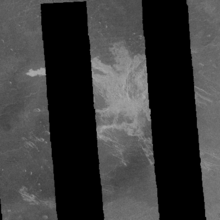Merit-Ptah
| Merit-Ptah | |
|---|---|
| Born |
Merit Second or Third Dynasty Egypt |
| Occupation | Physician[1] |
| Spouse(s) | Unknown |
| Children | Son |
Merit-Ptah ("Beloved of the god Ptah"; c. 2700 BCE) the chief physician of the pharaoh's court during the Second Dynasty of ancient Egypt.[2]
Merit-Ptah practiced medicine at a time when women in ancient Egypt regularly became physicians and midwives, and all-women medical schools existed.[2] Another known woman physician of ancient Egypt is Peseshet. Merit-Ptah and Peseshet are regarded as the earliest recorded woman physicians.[3][4]
Merit-Ptah's picture can be found on a tomb in Egypt's Valley of Kings. The "Chief Physician" inscription left on her grave by her High Priest son implies that she held a position in which she taught and supervised physicians, and that she attended to the pharaoh.[5][3][6]
The physician Merit Ptah should not be confused with Merit-Ptah, the wife of Ramose, the Governor of Thebes and Vizier under Akhenaten, who is depicted with her husband in TT55 in Sheikh Abd el-Qurna.[7]
Legacy

The International Astronomical Union named the impact crater Merit Ptah on Venus after her.[6]
Notes
- ↑ New Scientist, 19 Feb 1987. Page about Merit-Ptah.
- 1 2 Hope Jahren (2017). The Best American Science and Nature Writing 2017. Houghton Mifflin Harcourt. p. 312. ISBN 9781328715517.
- 1 2 Michael E. Moran (2013). Urolithiasis: A Comprehensive History. Springer Science & Business Media. p. 411. ISBN 9781461481966.
- ↑ Robert F. Phalen (2017). Core Ethics for Health Professionals: Principles, Issues, and Compliance. Springer. p. 77. ISBN 9783319560908.
- ↑ "Female Physicians in Ancient Egypt". Ancient History Encyclopedia. Retrieved 2017-10-06.
- 1 2 Ismail Serageldin (2006). Women in Science, Time to Recognize the Obvious (PDF). Bibliotheca Alexandrina. p. 33.
- ↑ Baikie, James (1932). Egyptian Antiquities in the Nile Valley. Methuen.
References
- Merit Ptah
- Kampp, Friederike: Die Thebanische Nekropole (Mainz: Zabern, 1996), Vol. I, p. 262.